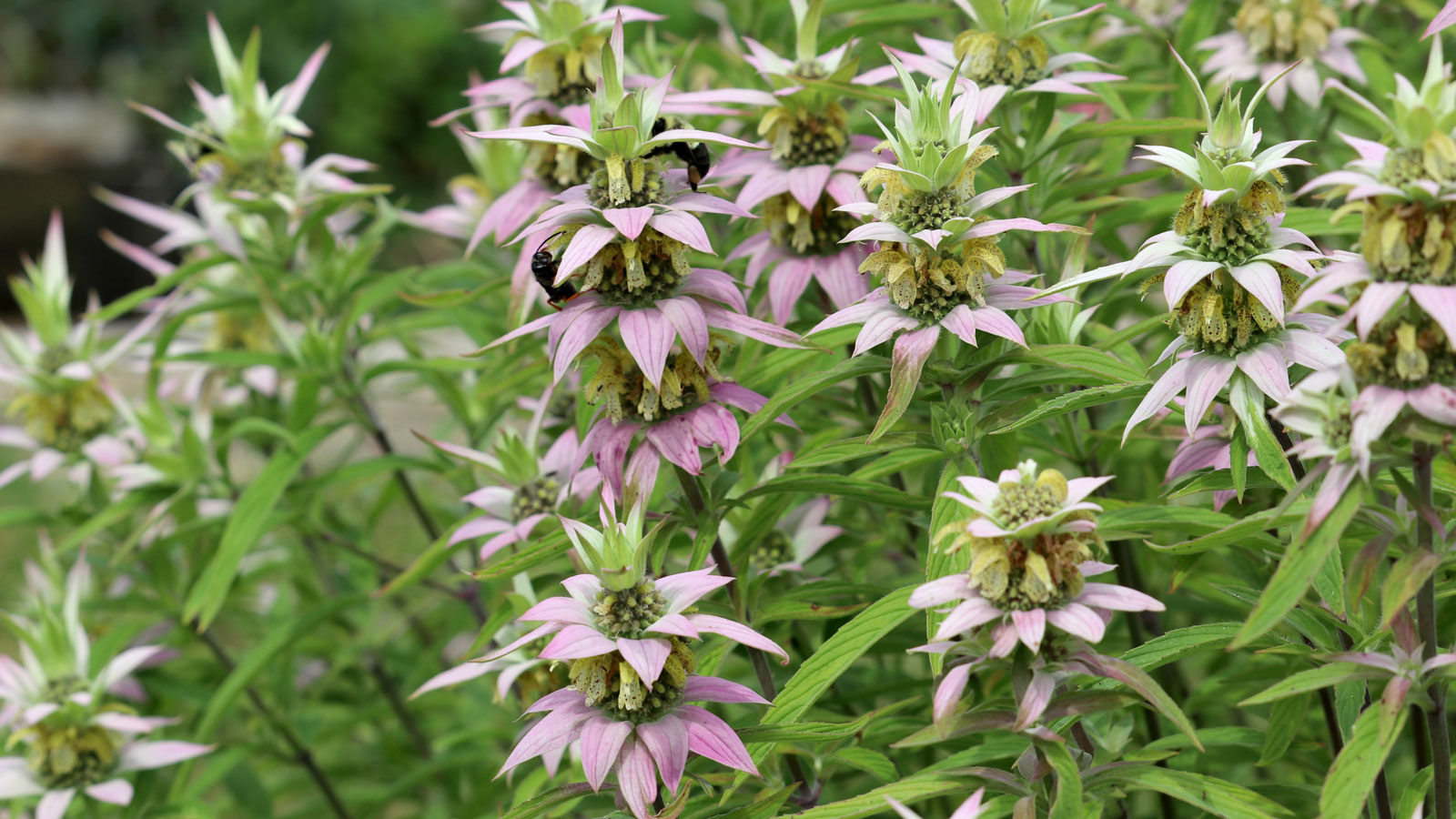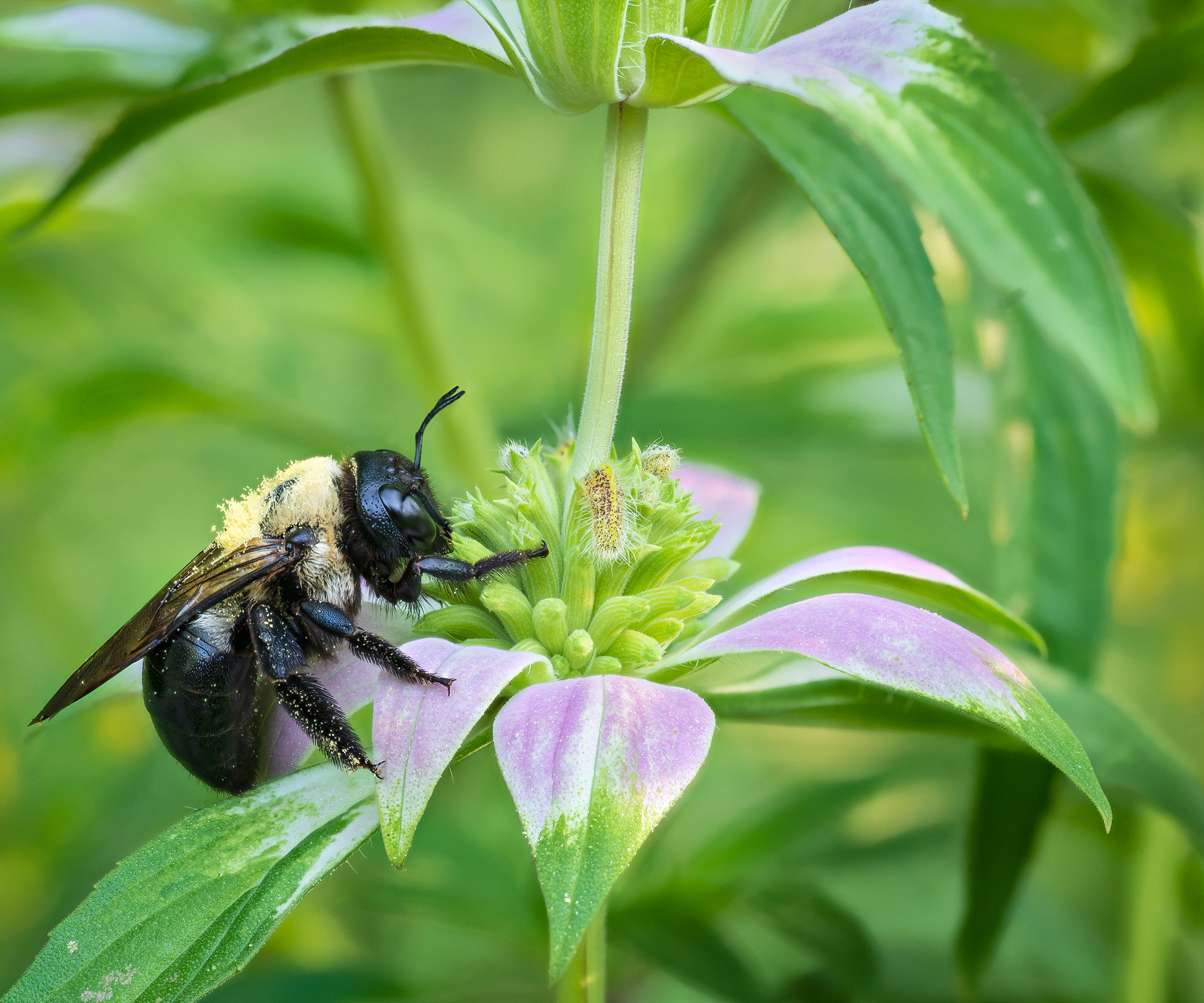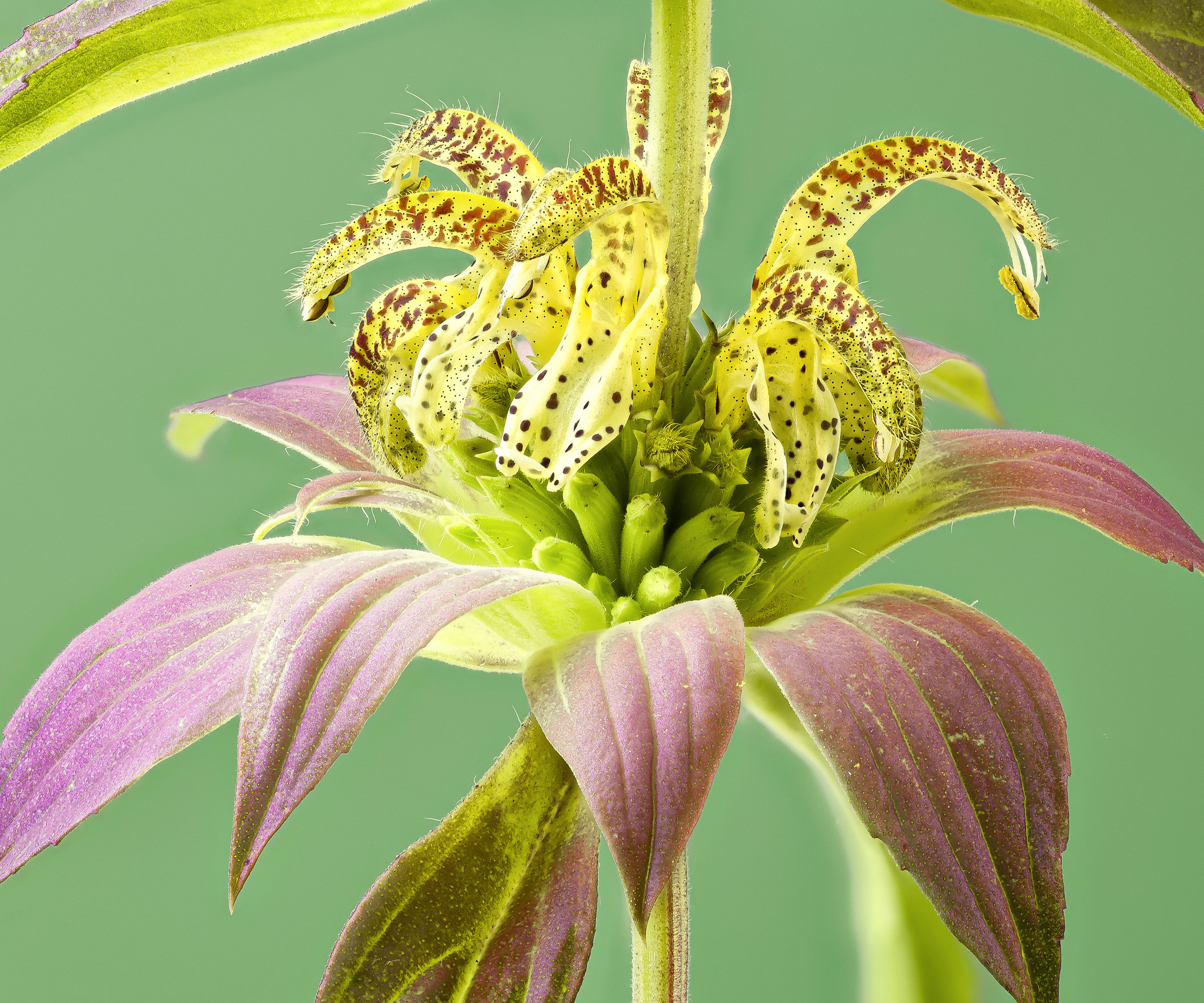Growing Spotted Bee Balm: Find Out How To Grow Horsemint For Your Pollinator Garden
For anyone looking to cultivate native flowering plants that attract pollinators, spotted bee balm is a must! We show you how to grow horsemint for friendly garden visitors


Quick Horsemint Facts
Botanical name:
Monarda punctata
Height: 12-24in (30-90cm)
Spread: 9-12in (22-30cm)
Sun exposure: Full sun
Soil requirements:
Well-draining
Hardiness zones:
USDA zones 3-9
When to plant:
Spring, fall
Flowering time:
Spring, summer
Native throughout much of the United States, horsemint bee balm (Monarda punctata) is sure to please both growers and pollinators. Attractive pink-purple flowers first appear in spring, drawing bees and an assortment of other insects with their fragrance. If you learn how to grow horsemint, you’ll find that this plant’s robust nature and ease of care makes it a favorite in the garden. It’s a wonderful way to attract native bees and boost pollination elsewhere in your yard or growing space.
In this guide, we’ll explore the needs of this unique species (also known as dotted horsemint or spotted bee balm) in greater detail. We’ll point out how to grow bee balm horsemint in the landscape, in potted pollinator gardens as container plants, and in other naturalized spaces. Find out how to make the most of this pollinator-friendly flowering plant.

Caring for Horsemint
Knowing how to grow spotted bee balm is a good way of encouraging more pollinators, even if you are already taking steps to attract bees using bee cups as well as pollinator strips and other incentives. When growing horsemint, it helps to know how to cultivate plants in the best way possible. Choosing the best lighting conditions and identifying the correct watering, feeding and soil types will help ensure success when you grow horsemint plant varieties.
- Lighting Conditions: Be sure to situate spotted bee balm plants where they can receive ample light. Full sun throughout the day, at least six-eight hours, often yields the best results in terms of vigor and flower production. Tall, leggy plants are likely the result of excess shade. Additional problems related to light stress include stunted growth and poor bloom.
- Temperature & Humidity: Horsemint is well-suited to a wide range of conditions, including both heat and humidity. This makes them a good candidate for growth where temperatures climb throughout summer. The plants also demonstrate an impressive tolerance to cold, perennializing well in even the coldest of growing zones.
- Watering Needs: Gardeners who want to grow horsemint plants should do so only in beds with good drainage. While bee balm appreciates regular watering, specifically during periods of drought, most species will not tolerate wet or waterlogged soils. If you want to avoid watering mistakes, irrigate on a weekly basis, and more frequently when growing in containers.
- Fertilizing: Horsemint plants only seldom require fertilizer, but if you want to feed them, do so in early spring just as their growth resumes. A slow-release feed at this time can help to boost the production of foliage and encourage blooming. Be cautious about overfeeding them, since excess nitrogen can cause poor flower production.
- Soil & Compost: Spotted bee balm grows best when it’s planted in a sandy loam. Compost and other amendments are often added at planting time to improve soil fertility and drainage within the beds. The need for and use of soil amendments can vary widely from one garden to the next. Some of the most common additions to their growing medium include sand, perlite, vermiculite and peat moss.

Where to Plant Horsemint
Within their native range, spotted bee balm plants require relatively little care. This makes them ideal for pollinator beds or for letting them naturalize and grow in informal landscapes. Medium-sized plants will perform well when they’re incorporated into mixed native plant borders or planted en masse. Grown in the spotted bee balm native range, they can create a strong visual impact.
Your flower beds should be positioned to accommodate horsemint’s specific needs. Horsemint plants love full sun which makes for better blooming throughout the season. Good drainage and consistent moisture are also key, both for the plants’ growth and their survival through winter.
How to Sow and Plant Horsemint
Horsemint is most commonly started from seed. Though transplants may be available from specialty nurseries, you’re more likely to find spotted bee balm seeds. The seeds will germinate quickly. Most gardeners begin this process in either spring or fall. Spring seed can be sown indoors in trays approximately six-eight weeks before the last average frost date.
Under ideal conditions, a combination of warmth and moisture, each seed should germinate within 10-14 days. You can sow seeds in fall in much the same manner. You should harden off new seedlings and transplant them into the garden just as the weather begins to cool, one or two months before the average first frost date. Sowing seed directly into amended beds at this time may also be a viable option.
Sign up for the Gardening Know How newsletter today and receive a free copy of our e-book "How to Grow Delicious Tomatoes".
Trimming and Deadheading Horsemint
Like other native species, deadheading can be used to encourage bloom and help to keep beds looking tidy. Those hoping to remove faded flowers from their horsemint plants can do so by snipping just below the flower spike, cutting back to the nearest set of healthy leaves. Routine deadheading will also help to prevent the spread of plants through yearly self-seeding.
Though pruning is considered optional by most, an early-season trim can help promote strong, bushy growth and encourage more vigorous production of flowers. End-of-season pruning, after all parts of the plant have died back, is also helpful. Removing dead or decaying matter is essential in preventing disease and benefits the overall health of the garden’s ecosystem.

Horsemint Problems, Pests & Diseases
Though several common garden pests are attracted to the plant, lygus bugs and leaf beetles may be of special cause for concern. In large numbers, these insects can rapidly damage plant stems, foliage and even flowers. Though most species of horsemint are quite robust, fungal issues may also become a problem. This is especially true where poor air circulation and/or drainage are a worry. Powdery mildew, root rot and rust are among the most likely diseases to affect the plant.
Propagating Horsemint
In addition to growing the plant from horsemint seeds, you can multiply your stock of spotted bee balm through both plant cuttings and plant division. Cuttings are generally taken in spring, with each stem segment containing at least three-five nodes. Strip the lower leaves from the plant, leaving one-two healthy sets of foliage. Position your cuttings into propagation trays, where consistent warmth and moisture help them begin to take root.
Established horsemint plants can also be divided. This is usually done early in the season, just before growth has resumed. Horsemint should be dug carefully, making certain to avoid damaging the roots. Each can then be divided into smaller sections and replanted directly into the garden, or into individual containers. Divisions should be watered well, with continued care throughout their first season.
Frequently Asked Questions
Is Horsemint Invasive?
Spotted bee balm is not considered invasive in most places. Horsemint seeds are known, however, for their ability to reseed and spread throughout the garden. Plants that have been left to set seed may multiply quickly. Growers uncertain of the status of the plant in their own region should always reference local laws and regulations before planting.

Tonya Barnett has been gardening for 13 years. Flowers are her passion. She has transformed her backyard into a cut flower garden, which she regularly chronicles on her YouTube channel http://www.youtube.com/@tonyawiththeflowers.